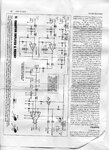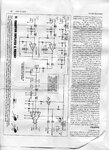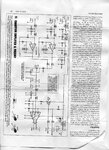boylesg
Advanced Member level 4
- Joined
- Jul 15, 2012
- Messages
- 1,023
- Helped
- 5
- Reputation
- 10
- Reaction score
- 6
- Trophy points
- 1,318
- Location
- Epping, Victoria, Australia
- Activity points
- 11,697
Is anyone familiar with this?
I am trying to get this working with 2 x electret microphone attached to PCB connectors 2 & 3.
I have added 2 wires to the positive supply pin, connected the end of these to 2 x 27k resistors and then connected the other end of these to the positive of the positive of the PCB connectors.
This gives me about 6V on the positive of the electrets when they are clamped into the connector.
I am getting output on my speaker (which came from a television set) but the output is very scratchy and talking into the electret microphones does not produce recognizable voice output on the speaker.
The circuit is meant to take 2 x microphones (L & R), since it has two input connectors on the pre-amplifier stage.
Sorry but I can't find a schematic of this online - I will have to scan the printed schematic that came with the kit.
But I am hoping that some one is played with this kit and is familiar with it.
- - - Updated - - -
Oh I think it has just dawned on me what I did wrong. I powered to electret with 12V but the opamp in the pre-amplifer is powered with 5V.
I am trying to get this working with 2 x electret microphone attached to PCB connectors 2 & 3.
I have added 2 wires to the positive supply pin, connected the end of these to 2 x 27k resistors and then connected the other end of these to the positive of the positive of the PCB connectors.
This gives me about 6V on the positive of the electrets when they are clamped into the connector.
I am getting output on my speaker (which came from a television set) but the output is very scratchy and talking into the electret microphones does not produce recognizable voice output on the speaker.
The circuit is meant to take 2 x microphones (L & R), since it has two input connectors on the pre-amplifier stage.
Sorry but I can't find a schematic of this online - I will have to scan the printed schematic that came with the kit.
But I am hoping that some one is played with this kit and is familiar with it.
- - - Updated - - -
Oh I think it has just dawned on me what I did wrong. I powered to electret with 12V but the opamp in the pre-amplifer is powered with 5V.





